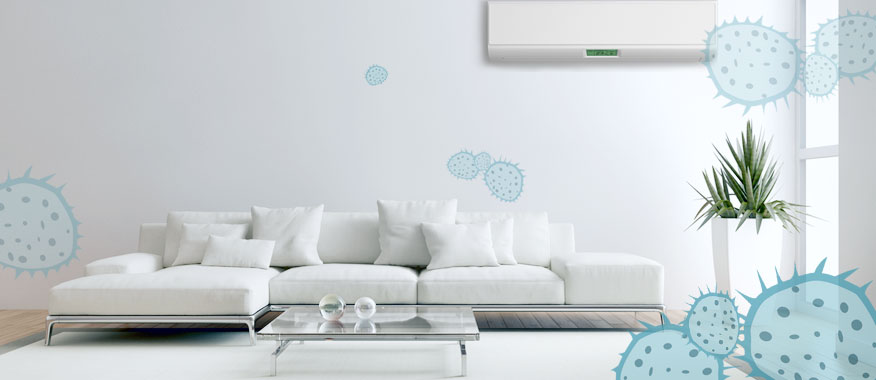Is your house killing you?

Keeping your Air Conditioning Clean is critically important for you families health.
One cause of indoor air contamination is due to bacterial and fungal contamination of air filters, heat transfer coils and duct-work within air conditioning systems that are poorly designed and maintained.
Air passes through dust filters prior to being cooled at the cooling coil and blown out from the air conditioner. Dust filters are usually intended to remove larger particles that would foul the cooling coil and aren't effective at removing small (respirable) airborne particles. As the larger particles are trapped by the filter, they form a layer that Improves the removal of repairable particles, but at the same time they reduce the air flow and (If they become wet) provide nutrients for fungi and mould to grow inside the air conditioner. Also, when air cools at the coil, It drops Its moisture to the coil surface and If this Is not allowed to drain away, fungi and bacteria can grow there too. Since the building air Is being circulated through this system, fungi and mould spores and bacteria and odorous VOCs are released through the use of the air conditioner and contaminate the air.
Regular maintenance of air-conditioning systems should detect and prevent these problems.
Air conditioning ducts should be regularly inspected to ensure there is no excessive dust buildup on surfaces (airborne dust will deposit to these surfaces over time). Fungi and mould growths can occur In ducts where condensation occurs. If these Can be seen, call an air conditioner specialist to fix the cause of the condensation and to clean or remediate the air conditioner. Ideally, this will prevent mould and fungi from continuing to grow.
If you find large amounts fungi or mould growing in the air conditioner ducts, first you need to fix the cause of moisture that's supporting the growths. Fungi and moulds won't grow without moisture/condensation. If you clean them without fixing the moisture problem, they'll re-occur. Do not try and remove large quantities yourself and/or clean them in bleach. Mould can be highly toxic and if in large quantities should always be handled by a professional. Bleach doesn't kill mould, but make it invisible whilst also feeding it. For small amounts of mould,use an 80%-20% white vinegar solution. Cleaning ducts requires specialised equipment to get along the long duct lengths and most importantly to capture and contain the dust released so that it doesn't contaminate your home. Make sure you use a reputable professional cleaner and ask them questions about these things.
If you do nothing your air conditioner will continue to release odorous gases and fungal spores, which can impact respiratory health, such as flu-like symptoms, asthma, respiratory tract infections, allergic reactions and toxic reactions.
For more information on fungi and moulds in your home see:
